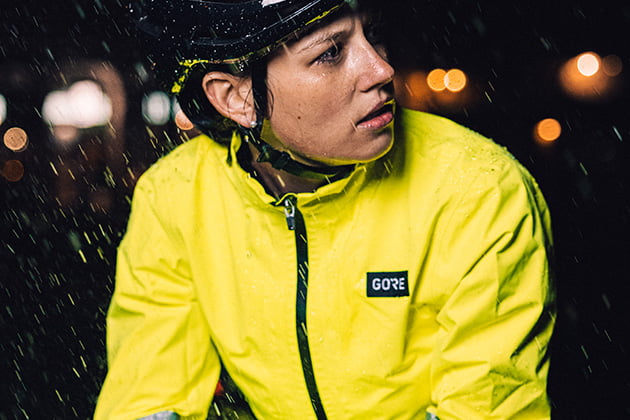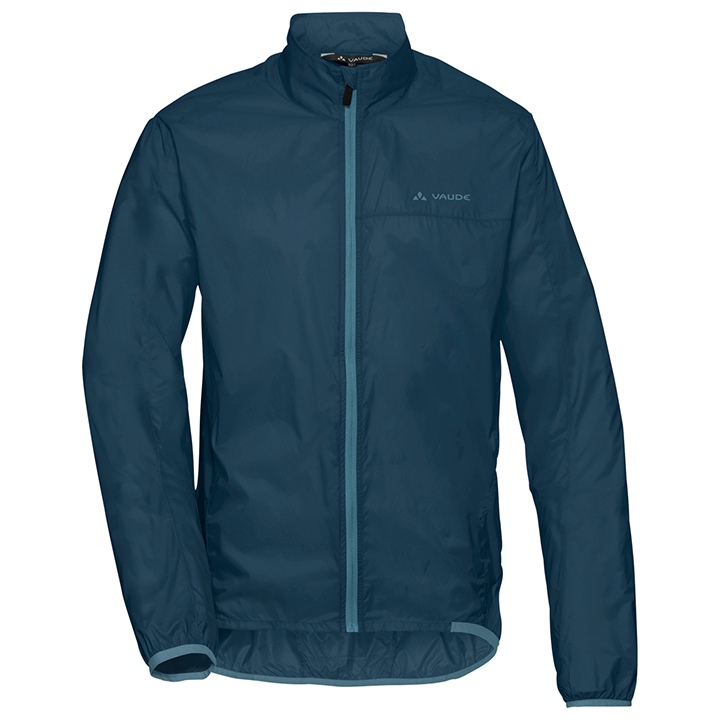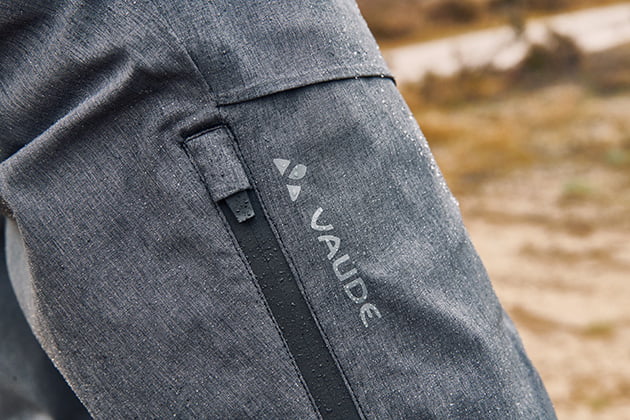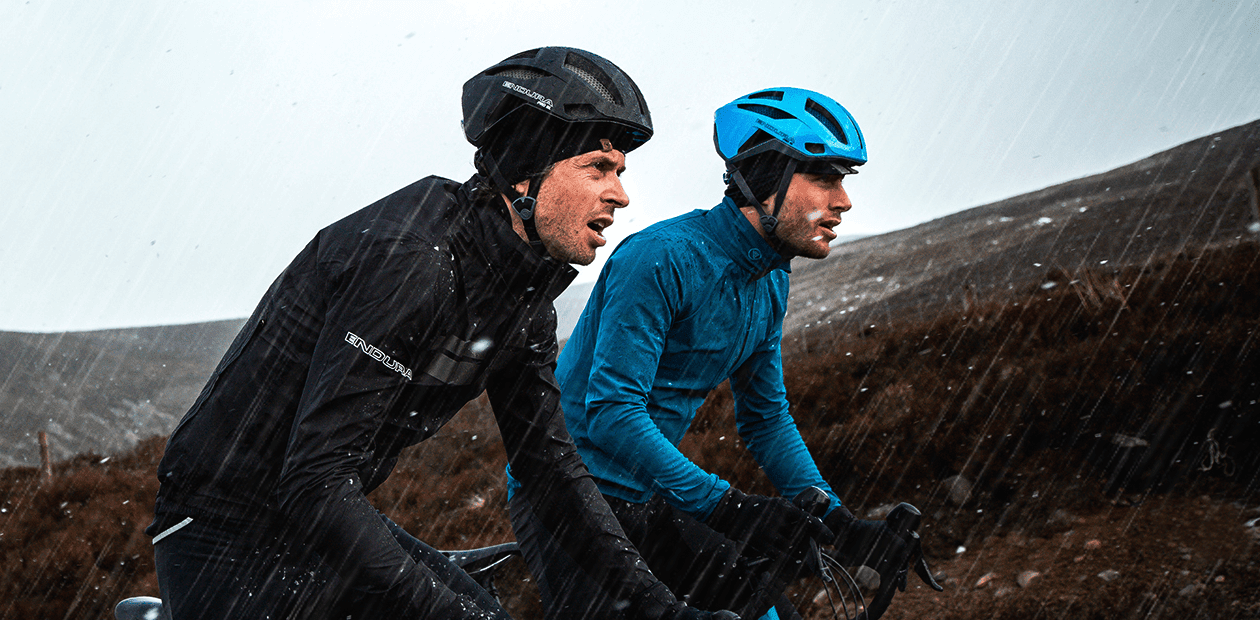Cycling is fun, healthy, and good for the environment! Many people are "fair-weather riders," and that's perfectly fine. But with the right rain gear, neither wind nor rain can dampen your cycling spirits! So, you don't have to listen to your inner couch potato … better buy a cycling rain jacket, and not just any, but a professional cycling rain jacket!
And before you stand bewildered in a bicycle shop or online store, looking at countless different models of cycling rain jackets with big question marks in your eyes – there are actually significant differences and many providers – read this little guide. It sheds light on the matter!
Nine general, important features of rain jackets for cycling
- In general, it can be said that cycling rain jackets are tailored to the riding position of the cyclist. The back is cut longer so that the jacket extends over the buttocks, protecting them from both spray from below and rain from above. The sleeves are also slightly longer. Especially for more leaned-forward riding positions, the extended back ensures that the jacket doesn't ride up the back.
- The material is particularly important: It should not only repel water from the outside but also be highly breathable to allow sweat and excess body heat to escape from the inside to the outside. This is achieved using membrane fabrics whose quality reflects in their waterproofness and breathability (I'll explain more about this below). If a rain jacket is only sealed from the outside, like the classic yellow "Friesian coat," the body can't breathe during exertion, and it feels like being trapped in a plastic bag.
- Cycling rain jackets should generally be lightweight and easy to fold: This allows you to conveniently carry them in your backpack, bike bag, or even your jersey pocket, ensuring they are always within reach if the weather takes a turn for the worse.

- No matter how waterproof the jacket's material is, if the seams aren't sealed or glued, water will penetrate exactly there. For cycling rain jackets, taped seams are particularly important in the exposed upper body and shoulder areas. A heat-sealed tape strip over the seam, usually on the inside but sometimes on the outside, is clearly visible. Pay attention to this!
- The same applies to the zipper. If there is no waterproof zipper sewn into the jacket (which you can see at first glance), it should at least be covered with a wide flap.
- Securely closing cuffs at the sleeves, waist, and collar are naturally also important to prevent water from getting in. If the cuffs are not inherently elastic, they should be adjustable with Velcro or have a drawstring at the lower jacket edge. An ergonomically shaped, slightly higher collar is good for the collar.
- Have you ever wondered why so few cycling rain jackets have hoods? It's actually quite logical because they are not very compatible with a bicycle helmet! However, jackets designed for MTB, touring, and everyday use sometimes have a hood for added versatility. Their hoods are often designed to be worn under a helmet.
- Cyclists are road users. Therefore, it's literally a matter of life and death to be highly visible as a cyclist. Especially on gloomy and dark rainy days, rain jackets should be equipped with many reflective surfaces or elements or come in neon colors. A combination is, of course, the best!
- Various pockets, preferably with waterproof or concealed zippers, are generally practical for rain jackets. In cycling, the three-part back pocket is common, which is easily accessible even while riding.

Special rain jackets for specific cyclists
What type of cyclist are you? This is the most important distinguishing feature between the jackets. There are specific cycling rain jackets for:
- Road cyclists
- Mountain bikers and cross-country riders
- Everyday and touring riders
Rain jackets for road cyclists are:
 super lightweight: because they need to fit rolled up in the jersey pocket
super lightweight: because they need to fit rolled up in the jersey pocket- tightly fitted: for aerodynamics and to prevent flapping and rustling in the wind
- extremely breathable: so that heat and sweat can escape, keeping the rider dry
- as elastic as possible: to avoid restricting movement and maintain a close fit
- quick-drying: to store them dry again once the rain cloud has passed
Rain jackets for mountain bikers and cross-country riders stand out with:
 durability: because off-road rides often involve falls, brush contact, and flying debris
durability: because off-road rides often involve falls, brush contact, and flying debris- a more relaxed fit: to accommodate additional underlayers, aerodynamics are not critical
- practical features: various pockets, perhaps a helmet-compatible hood that can be rolled up, adjustable cuffs, and more. Everything that's useful on long trails
- good breathability: as it's still athletic riding, and the body sweats, so it all needs to escape
- compact packing size: so the jacket, when packed small, can always be with you
Rain Jackets for Everyday, Commuters, and Tourers are similar to those for mountain bikers.
They might be a bit less equipped, with a not  quite as long back since you sit more upright, and they certainly have a hood. They are more versatile, so you can also wear them comfortably on foot.
quite as long back since you sit more upright, and they certainly have a hood. They are more versatile, so you can also wear them comfortably on foot.
For everyday use, waterproof cycling rain ponchos with hoods are also popular. They are affordable, fold up small, and are airy. They cover a large area of the body, including your backpack or bag … but only if there's no wind. When it's windy, the wind blows the poncho around and the rain onto your clothing. Since bad weather without wind is rather rare, rain ponchos are at best for emergencies!
The Membrane, the Heart of the Cycling Rain Jacket
As many manufacturers produce rainwear, there are just as many membranes. The most well-known manufacturers include Sympatex with the membrane of the same name and Gore Wear with the "Gore-Tex" membrane. The "Ceplex" membrane from Vaude or the "ExoShell" membrane from Endura might not be as well-known, but they are equally high quality. Rain jacket membranes are all 100% waterproof and windproof and very breathable.
Gore Wear not only manufactures their own rain jackets but also supplies membrane materials to other manufacturers. Gore Wear has also succeeded in making the membrane, which is normally not very elastic, highly elastic. Therefore, the highest quality road cycling rain jackets are equipped with highly elastic Gore-Tex membranes.
The membrane materials of rain jackets are constructed in layers. The membrane itself is one layer, which is laminated to a carrier material, e.g., polyamide. It is usually located in the middle, beneath an outer, durable layer and an inner layer that wicks away moisture. In very high-quality road cycling rain jackets, such as the Gavia Lite by Castelli, the elastic membrane is even on the outside, and the top layer is omitted.
This saves a lot of weight because the normal top layer cannot soak up water, and the membrane doesn't absorb water. The water can simply be shaken off, and the jacket is immediately dry. However, this production is only suitable for road cycling rain jackets, as the membrane itself is very delicate and would be damaged by the sometimes intense contact with bushes and nature during mountain bike rides.
So how can you tell the quality of a rain jacket membrane?
- By the water column: The water column is indicated in millimeters and refers to the water level on a 10 cm² area at which water starts to penetrate waterproof fabric. The higher the water column, the denser the material!
- By breathability: It is usually indicated by the MVTR value, which defines the amount of evaporated liquid per cubic meter in 24 hours (example: 15,000g/m²/24h). Sometimes you also see simplified MVTR values like "Breathability: 10,000". And here too, the higher, the better!
Of course, these are just guidelines, as they were measured in a laboratory environment. The actual values depend on temperature, humidity, body climate, and, of course, undergarments.
Environmental Protection: Rain Jackets and Sustainability
Many membranes and impregnations use so-called PFCs: per- and polyfluorinated chemicals. The term covers a variety of chemicals that have in common that they repel water, fat, and dirt. These are, of course, excellent properties for outdoor clothing, which explains the widespread use of these chemicals.

But for both people and the environment, less is better. Non-natural substances can, for example, rub off the jacket and end up on the skin and in nature. That's why more and more manufacturers are turning to PFC-free alternatives.
Above all, Vaude: As one of the first brands, Vaude researched environmentally friendly alternatives and now has a 100% PFC-free collection. This is made possible through a smart selection of processed fabrics and Vaude EcoFinish. EcoFinish offers the full performance of conventional DWR (durable water repellent) and is thus a perfect alternative.
Conclusion
I hope you now agree with me that a simple everyday rain jacket for cycling is only partially suitable. Because it is likely to be too short at the back and arms, probably not very breathable, and likely quite bulky and heavy to carry. However, with a special rain jacket for cycling, there are no more excuses. It rides just as well in wet weather as it does in dry!
As a final tip: Rain jackets can only be breathable if the undergarments are breathable and moisture-wicking. So, when you're physically active, wear technical cycling apparel made of technical fabrics that wick away moisture. In another post, you can learn what makes a good cycling jersey.



